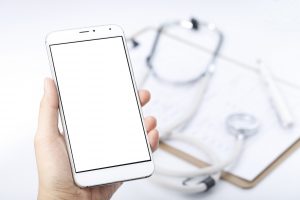Smartphones may play an increasingly important role in the identification and diagnosis of diabetic retinopathy (DR), especially in areas with limited access to more expensive retinal imaging equipment and where there is a lack of qualified personnel.
La diabetic retinopathy (RD) is among the leading causes of visual impairment worldwide. In fact, one in three patients with diabetes mellitus develops RD. It is a treatable disease if diagnosed in time, yet most patients remain asymptomatic until the most advanced stages and therefore do not receive appropriate treatment in time. Therefore, early diagnosis of DR, before irreversible loss of visual acuity, is crucial to ensure better outcomes for the patient.
The gold standard diagnostic test for DR is fluorescein angiography. However, fundus cameras are not easily transportable, are expensive and require specific operator skills. Furthermore, fluorescein angiography is invasive and is associated with possible side effects, such as reaction to the contrast medium. Other frequently used RD identification approaches include ophthalmoscopy, slit-lamp biomicroscopy and other forms of photography of the ocular fundus. Finally, optical coherence tomography is the emerging technology that can also reliably identify diabetic macular oedema by quantifying retinal thickness, but it is expensive and uses bulky equipment.

The smartphone digital ophthalmoscope, based on the use of a smartphone's built-in camera for imaging the retina, could be a valuable method to detect DR, due to its convenience, portability and ease of use compared to traditional approaches. Due to its ease of use, this device could also be used by non-specialised healthcare professionals. Furthermore, images acquired from smartphones can be easily shared and classified remotely by ophthalmologists or other specialists via telemedicine. These benefits are particularly important in healthcare settings with limited resources, such as rural areas in developing countries that lack medical equipment and trained healthcare professionals.
A recent review reported that smartphone ophthalmoscopy has a good ability to detect diabetic retinopathy, providing a new fast and reliable method of diagnosis. The best performance was observed in the detection of proliferative retinopathy, with increased sensitivity and specificity.
In the studies included in the review, smartphone ophthalmoscopy exceeds the minimum UK National Health Service targets, which require retinal imaging equipment to have a minimum resolution of 6 megapixels or 30 pixels per retinal degree.
Furthermore, in some cases, smartphone apps have been used to digitally merge multiple images obtained for a single eye or to improve the image acquisition process, facilitating ergonomic focusing and image acquisition.
Bibliography:
Dr. Carmelo Chines
Direttore responsabile
